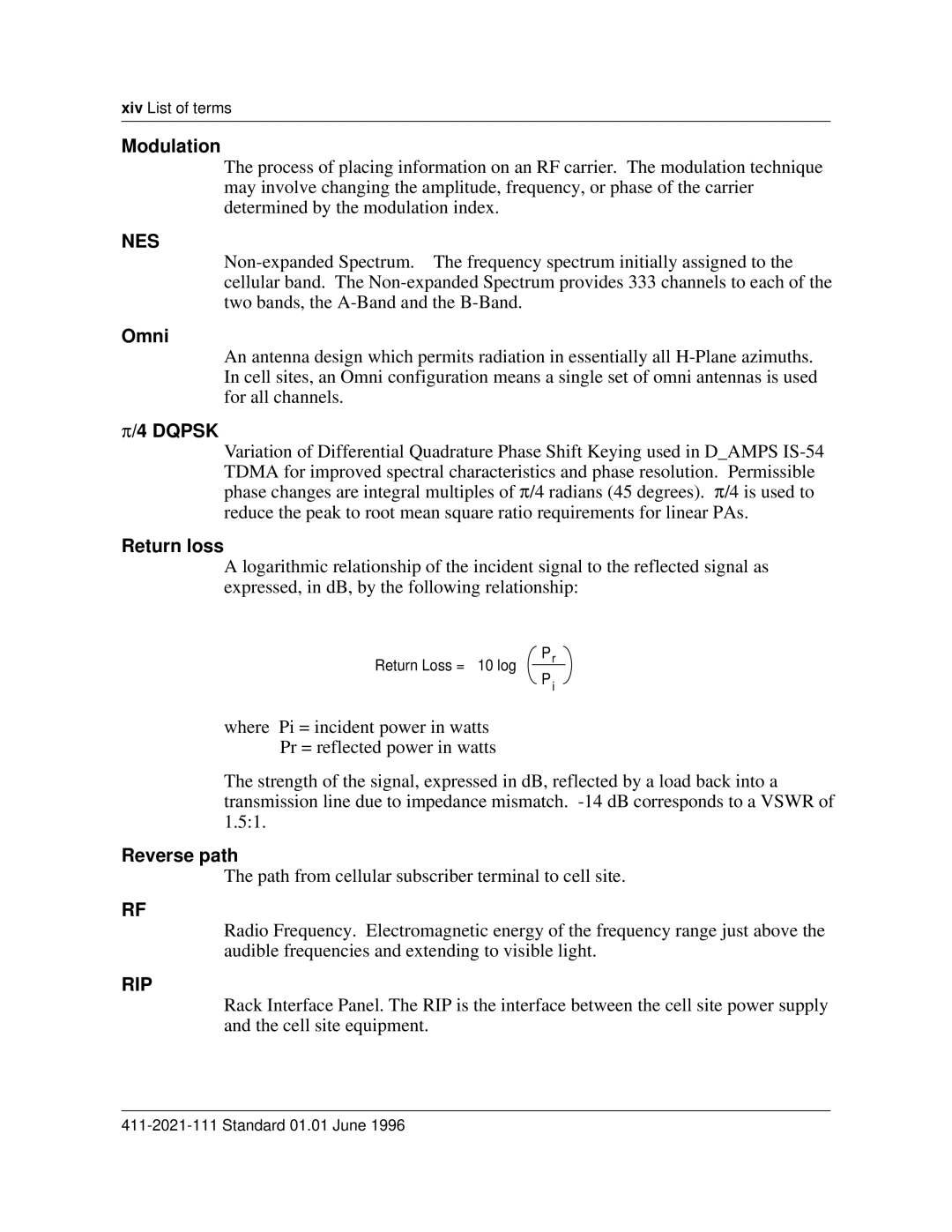
xivList of terms
Modulation
The process of placing information on an RF carrier. The modulation technique may involve changing the amplitude, frequency, or phase of the carrier determined by the modulation index.
NES
Omni
An antenna design which permits radiation in essentially all
π/4 DQPSK
Variation of Differential Quadrature Phase Shift Keying used in D_AMPS
Return loss
A logarithmic relationship of the incident signal to the reflected signal as expressed, in dB, by the following relationship:
Return Loss = 10 log Pr
Pi
where Pi = incident power in watts Pr = reflected power in watts
The strength of the signal, expressed in dB, reflected by a load back into a transmission line due to impedance mismatch.
Reverse path
The path from cellular subscriber terminal to cell site.
RF
Radio Frequency. Electromagnetic energy of the frequency range just above the audible frequencies and extending to visible light.
RIP
Rack Interface Panel. The RIP is the interface between the cell site power supply and the cell site equipment.
